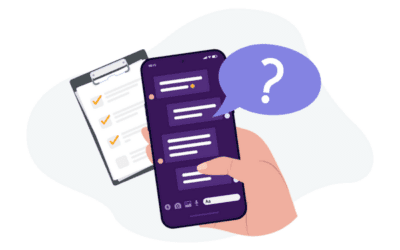Chatbots had the potential to fundamentally change how companies interact with customers. They failed. Yet conversational AI technology still has the potential to revolutionize multiple industries.
Chatbots promised to transform nearly every industry- from entertainment to retail to tourism. The vision was that widespread use of chatbots would bring more automation, efficiency, and intelligence to how they interact with customers and operate internally.
Unfortunately, early representatives of the chatbot revolution over-promised and under-delivered, leaving many consumers and operators confused about their potential, not to mention a bit underwhelmed.
As chatbots began to hit the market a few years ago, some pundits predicted that customer service would never be the same and that companies could reduce overhead, improve customer satisfaction, and allow their employees to focus on more meaningful, complex tasks. The idea was that chatbots would answer repetitive questions asked by customers.
Instead, chatbots are generally disliked by customers today, or as Forrester put it, “Most Chatbots Disappoint.” The New York Times even coined a phrase referring to the reaction many people have when encountering a chatbot when they’re looking for immediate help or important information: “the spiral of misery.”

Today, chatbots’ reputation is such that some experts believe their widespread adoption has actually hindered the advancement of digitization, leading to a “wicked automation hangover” in scalable customer service.
The good news is that many companies have realized the value of chatbot alternatives that employ very different, far more sophisticated technology. A conversational AI platform uses artificial intelligence technology, supplemented by natural language processing and machine learning techniques, to understand human language, and the context behind it, and get smarter over time.That’s quite a contrast from the exclusively rule-based system that most basic chatbots employ. Conversational AI is designed to help companies revamp how they interact with consumers and organize their business with powerful software.
This is particularly true in industries that grapple with seasonal swings in both hiring and customer demand. (Think retailers and holiday shopping, or resorts that benefit from huge spikes in the summer).
Still, many businesses and leaders remain hesitant to push forward with more sophisticated web chat technology, partly because of lingering confusion about what chatbots and true chatbot alternatives can and cannot do.
Overall, our hope at Satisfi Labs is to draw a clear contrast between traditional chatbots and chatbot alternatives to help decision-makers understand the key differences. The goal is two-fold: to help them set expectations for whichever technology they adopt and to guide them toward the best choice for maximizing the ROI of conversational AI if they choose to invest in it.

First, here are the common characteristics of chatbots:
- Limited in scope: Chatbots are often built upon generic technology, and mainly employ a rule based natural language understanding.
- Finite containers: Rather than being conversational or intelligent, chatbots are composed of a preset group of answers to frequently asked questions (almost like a closed search engine).
- Contextually challenged: Chatbots struggle with language nuance since most are limited to a preset menu of inputs and outputs.
- “C students”: Chatbots don’t get smarter over time.
- You get what you pay for: Chatbots can be inexpensive to implement, but they require a fair amount of work to maintain because they commonly lead to dissatisfaction among customers, who then seek help from human agents.
- Bad bot equals bad brand: There is increasing evidence that chatbots can actually damage a company’s reputation, leading to frustration and lost business opportunities.
Now, here are the common characteristics of alternative AI solutions:
- Smarter, faster, and deeper: Because they employ real algorithms, conversational AI platforms get smarter over time as they handle more customer interactions and recognize commonalities that allow them to continually add to their database of answers and deliver more accurate responses faster.
- Capable of learning new tricks: Not only can true conversational AI platforms recognize patterns, but they can also learn new concepts over time, enabling them to service customers in unanticipated ways without being programmed to do so.
- Helping customers while improving the entire organization: Conversational AI platforms spin off a continuous stream of data on customer needs and interests, which can help with decision-making on product offerings, design of physical spaces, pricing, and other areas. Overall, customer data from artificial intelligence can markedly improve customer experience.
- Free up your employees: When conversational AI platforms are harnessed, employees can save significant time on rote tasks or answering routine questions, which can help with staffing and talent retention and drive leaner operations. As a result, customer support teams can focus more on strategic tasks and more complex customer issues that truly elevate the customer experience. (We see this a lot with conversational AI applications in tourism.)
- Benefit from group learning: While chatbots are typically self-contained within a company, many conversational AI tools are used across multiple businesses and industries, which means they apply learnings garnered from addressing thousands, if not millions, of queries. This form of collaborative intelligence is invaluable as conversational AI becomes more pervasive.
- Speaking the language: True conversational AI is increasingly being powered by natural language processing and sentiment analysis, which is leading to far more helpful (and positive) consumer interactions.
- Getting things done: AI virtual assistants are designed for problem-solving rather than just delivery of information.
- Drive more business: These platforms can increasingly execute transactions, such as ticket sales and other e-commerce activity, which means they can potentially drive more revenue.

Overall, there’s no doubt that artificial intelligence will have a significant impact on nearly every industry over the next decade or so. Basic chatbots are only the first (rather primitive) step for most companies on this journey. The businesses that fully take advantage of the potential of conversational AI solutions will fundamentally revamp how they interact with customers, structure their internal processes, and ultimately, compete to win the future.




